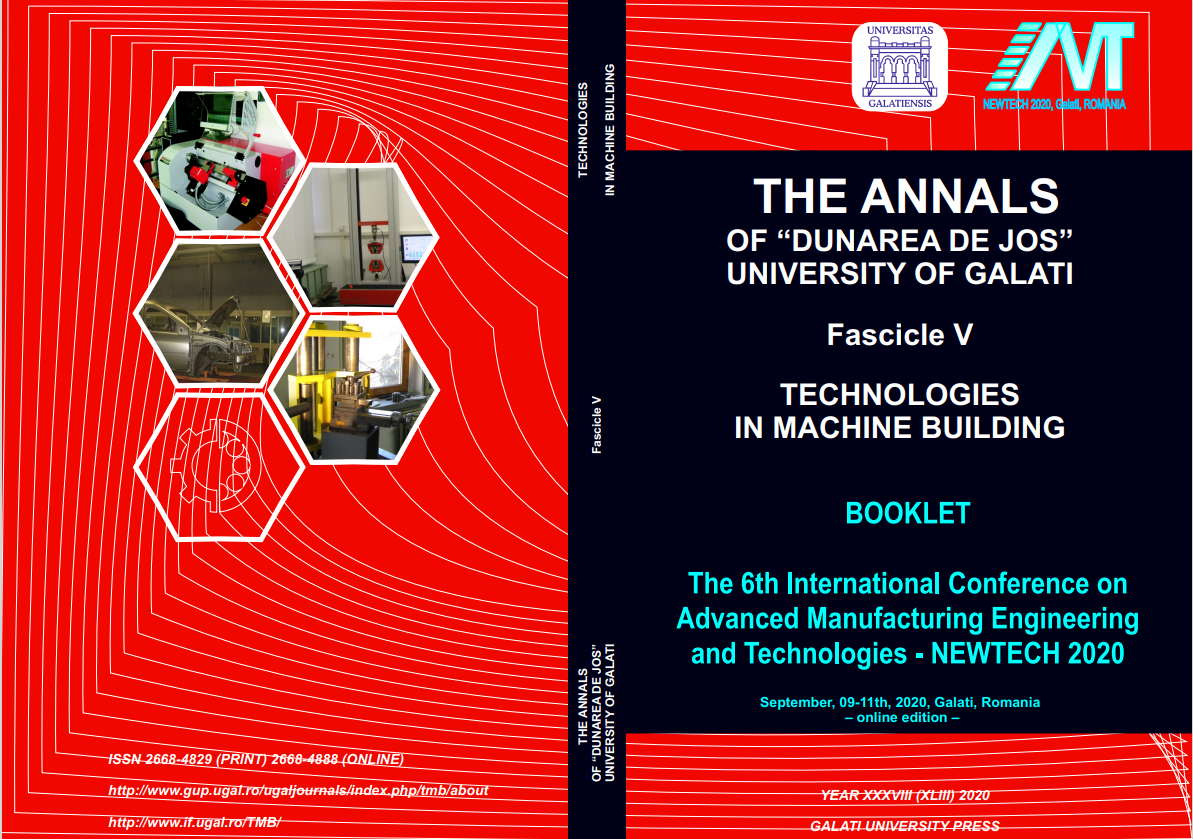Algorithm for screws profiling of a trilobed compressor
Abstract
Screw compressors are characterized by high compression ratio of working fluids. Their role is to reduce the volume of working gas by increasing its pressure. The active elements of this type of compressor consist of two helical rotors, with lobes, mounted in the compressor housing. The front profile of each rotor is composed of complex curves, including, in turn, elementary curves such as arcs, linear segments, cycloidal curves and sometimes non analytic curves. The design of the front profile of the rotors is aimed at reducing the friction between the rotors and improving the sealing between their profiles during rolling. This paper presents a study of the possibility of making a conical helical rotor, multilobed, which is part of the construction of a compressor type Z, Z + 1. This type of compressor is characterized in that the number of lobes of the driven rotor is one unit higher than the number of lobes of the driving rotor. The paper proposes a profiling algorithm based on "virtual focal points theorem" as an approach to the study of the winding between the conical helical surfaces of the two rotors. The algorithm is based on the observation that the two helical surfaces form, in cross section on the axis of the driving rotor, profiles in plane gear. This allows the determining of the specific enwrapping condition and therefore the determination of one of the two profiles under the conditions in which the other profile is known. The known profile can be expressed analytically or in discrete form, obtained by measurement.


